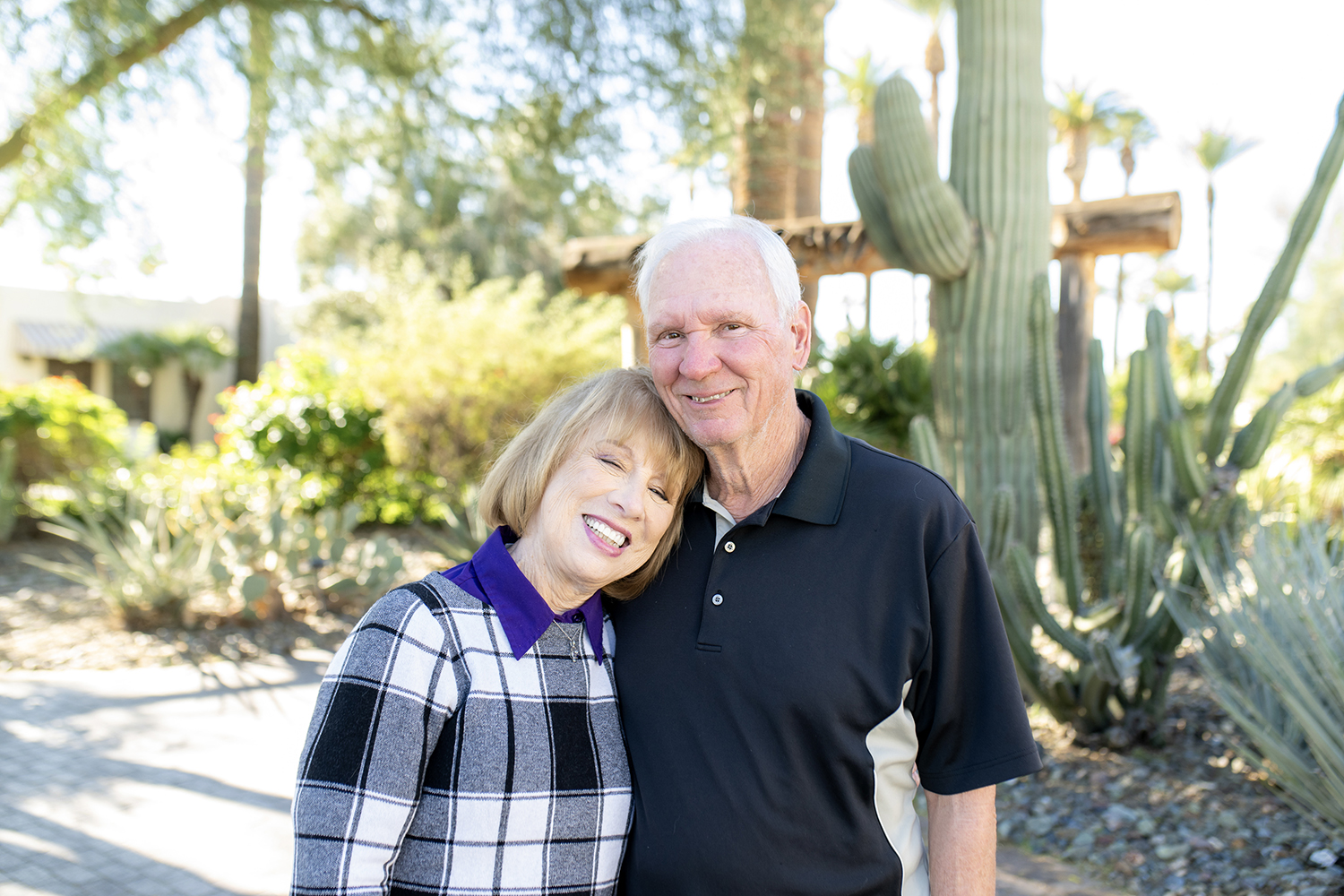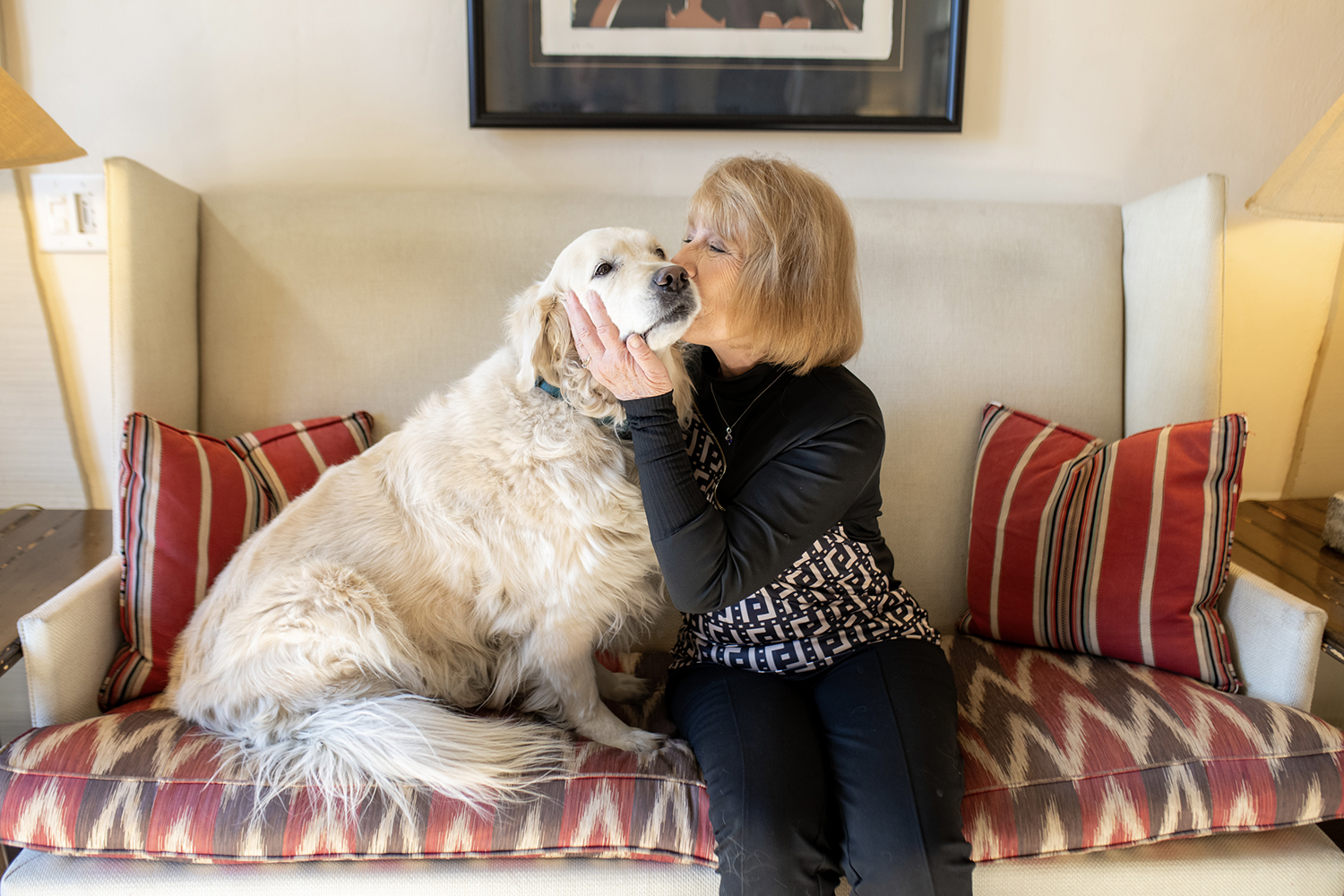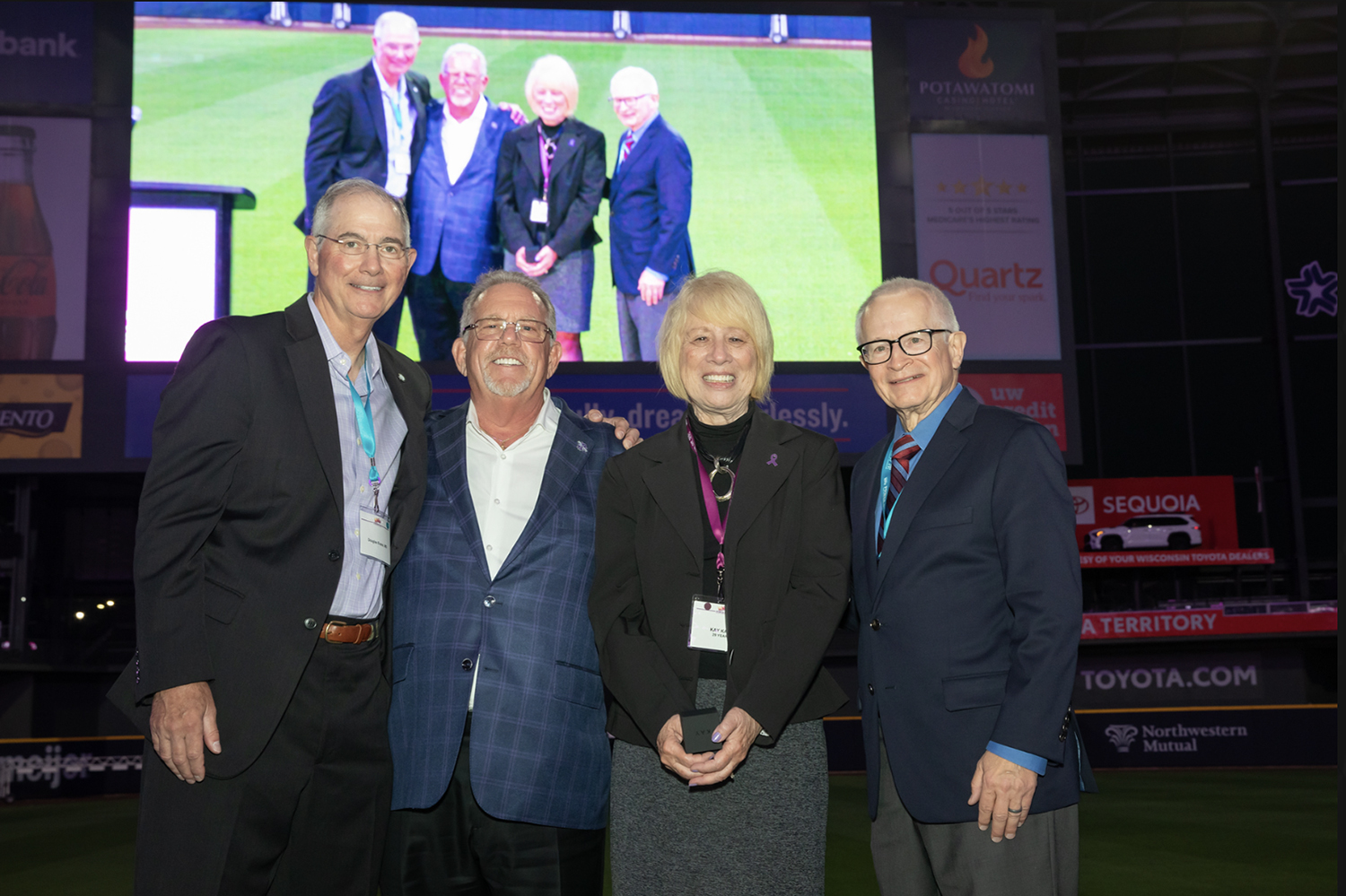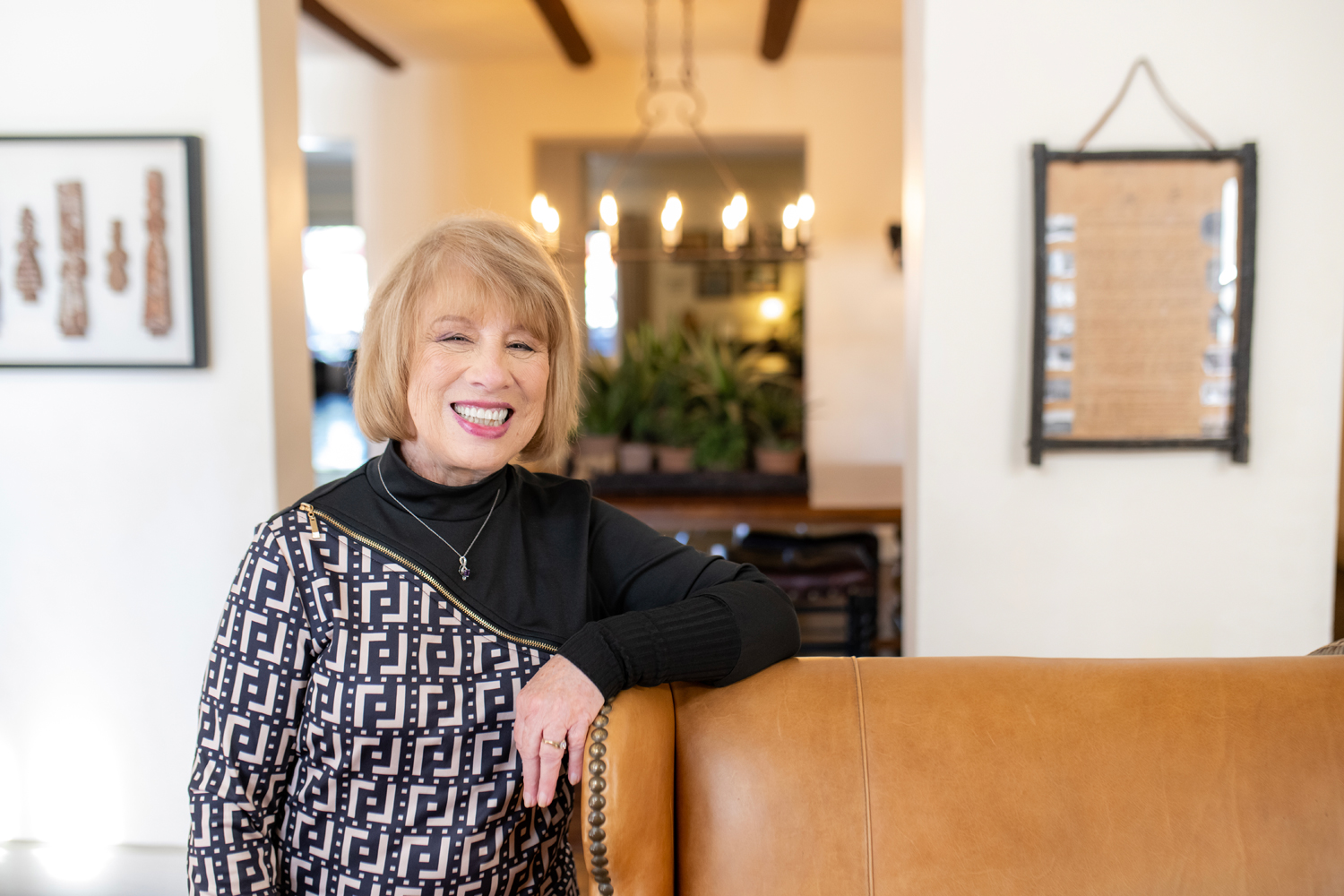WHEN KAY KAYS RECEIVED A PANCREATIC CANCER DIAGNOSIS in 1994 at the age of 44, she had few treatment options and little information. Surgery was the standard of care for operable pancreatic cancer. Chemotherapy use was limited and did little to improve survival. Written materials and early cancer websites contained only brief mentions of the disease. Most strikingly, Kays noted a lack of survivors.
In 1994, very few people with pancreatic cancer lived five years or more after diagnosis. Five-year relative survival was 3.7%. (Today, the percentage has improved to about 12%.) Most people died from the disease in a matter of months. Nearly all cases of pancreatic cancer were diagnosed after it had spread beyond the pancreas, when it was too late for effective treatment. The outcomes were so bleak that “it was a disease you just didn’t talk about,” says Julie Fleshman, president and CEO of the Pancreatic Cancer Action Network (PanCAN), founded in 1999.
Luckily, Kays’ doctors discovered her pancreatic cancer early, after she went to the emergency room for back pain that she thought was from gallstones. A surgeon successfully removed her tumor and part of her pancreas, but even so, her medical team told her the cancer would almost certainly return in a matter of months. Kays, who had a 17-year-old son, believed her days were numbered.
The Arizona resident began checking off items on her bucket list. She took a sign language course at the local community college and fulfilled a lifelong dream of working with children when she became a counselor at a summer camp for kids with cancer. Despite the grim prognosis, months turned into years, and she was still alive as she approached five years after her diagnosis.
“I lived those first five years under the impression that I was dying. I hoped for the best, but prepared for the worst,” Kays remembers.
As she approached the five-year survival mark, Kays received crushing news: An imaging test revealed new cancer in her pancreas. In 1999, she underwent surgery to remove her entire pancreas and spleen, but the cancer spread to a nearby lymph node. In 2002, eight years after her initial diagnosis, Kays received neoadjuvant chemotherapy using the drug gemcitabine to help shrink the tumor on her lymph node before doctors removed it surgically. Neoadjuvant chemotherapy—taking chemotherapy drugs prior to surgery—had been introduced as a treatment for pancreatic cancer after Kays’ diagnosis in 1994.

Kay Kays and her husband, Irv, stand outside their home in Sun City, Arizona. Photo by Sarah Hoag
Kays saw this medical advance as a sign of hope for a type of cancer where hope can be hard to find. Despite progress in treatment, pancreatic cancer today still has the highest mortality rate of all major cancers. Most pancreatic cancers are discovered too late for effective treatment. Against these odds, Kays has made hope a cornerstone of her patient advocacy over the past two decades. Now a 30-year pancreatic cancer survivor, she works to advance pancreatic cancer research and raise awareness of the disease.
A Difficult Disease to Treat
The pancreas is a spongy organ, part of the gastrointestinal system, that secretes digestive juices and hormones that regulate blood sugar. It is located deep inside the abdomen, behind the stomach and surrounded by the liver, spleen and small intestine, making it impossible to see or feel pancreatic tumors during a regular medical exam. There is no standard screening or diagnostic tool for pancreatic cancer.
Symptoms of the disease often arise after the cancer has already advanced. These can include jaundice (yellowing of the eyes or skin), belly or back pain, nausea, vomiting, weight loss and poor appetite. Early-stage pancreatic cancer typically doesn’t cause signs or symptoms, though Kays experienced weight loss and ongoing back pain prior to her diagnosis.
While people of any age can have pancreatic cancer, it’s most commonly diagnosed in older adults. About two-thirds of pancreatic cancer cases are seen in adults over age 65. Smoking, being overweight, and having diabetes or a family history of pancreatic cancer are important risk factors for the disease, but people with no known risk factors are diagnosed too.
People with a high risk of developing pancreatic cancer may be eligible for tests to detect the cancer early.
The U.S. Preventive Services Task Force, which makes recommendations for cancer screenings and other ways to prevent disease, continues to recommend against pancreatic cancer screening in average-risk adults without symptoms. However, the guidelines do not apply to people at high risk due to genetic susceptibility. “We’ve come a long way in identifying genetic risk factors,” says Erkut Borazanci of HonorHealth Research Institute in Scottsdale, Arizona, and the medical oncologist for patient advocate Kay Kays.
According to the American Society for Gastrointestinal Endoscopy, people recommended for pancreatic cancer screening include those with BRCA1 or BRCA2 genetic mutations, with or without a family history of pancreatic cancer; PALB2 or ATM mutations; and certain inherited conditions, including Lynch syndrome.
Current tools for pancreatic cancer screening include imaging tests such as an MRI and endoscopic ultrasound. Pancreatic cancer is potentially curable when detected early.
Historically, pancreatic cancers were lumped together, according to Erkut Borazanci, a medical oncologist and director of oncology at HonorHealth Research Institute in Scottsdale, Arizona, and Kays’ current treating physician. But in the past few decades, advances in molecular tumor testing and germline genetic testing have helped researchers and physicians understand more about the different subtypes of pancreatic cancer, he says.
Pancreatic ductal adenocarcinoma, which grows from the small tubes that carry digestive juices through the pancreas to the small intestine, is the most common form of pancreatic cancer, making up more than 90% of all pancreatic tumors. It’s also one of the most aggressive and lethal forms.
Kays had a rare form of pancreatic cancer called pancreatic mucinous adenocarcinoma, a subtype that most commonly strikes women in their 40s and 50s. Mucinous tumors like Kays’ grow from the epithelial, or surface, layer of the pancreas rather than the duct system. Most of the tumors are benign, though 15% to 30% advance to malignant cancer. In 1999, Kays learned she had another subtype of pancreatic cancer, papillary adenocarcinoma.
In 2004 and 2006, Kays experienced recurrences of pancreatic cancer—the cancer had metastasized to her lung—and she underwent surgery to remove her right lower lung lobe in 2006. For reasons that are not clear to Kays and her medical team, she’s been cancer-free ever since. She still undergoes yearly imaging tests, which recently turned up nodules on her lung, thyroid and kidneys. But for now, she has opted to “watch and wait” rather than undergo treatment because the nodules do not appear to be growing.
“Survivorship is a roller coaster ride. You just hold on for each day because you never know what the research is going to bring out,” she says.
A Force for Research
When Kays met a fellow pancreatic cancer survivor for the first time, she immediately felt a sense of community and connection that she had missed in the early years of her survivorship. Kays, who met him through a cancer support group, peppered him with questions. “When we later became friends, he confided in me that he initially thought I was a stalker,” she laughs. The two remained friends until he died, a seven-year survivor.

Kay Kays relaxes with her dog, Bella. Photo by Sarah Hoag
Kays learned through the support group how to actively participate in her medical care by asking questions, being well-informed about treatment options and participating in decision making. “It was eye-opening,” she says. “I didn’t know you could do that. How I grew up, you didn’t ask questions of your doctor. You heard what he said and just did it.”
Kays, who lives in Sun City, Arizona, a Phoenix suburb, wanted to begin helping others as a patient advocate. In 2003, she co-founded the Arizona Pancreatic Cancer Support Network, the first pancreatic cancer-specific support group in the area. Group members wanted to know more about pancreatic cancer research that might improve their survival odds. Kays began gathering as much information as she could, but there was not much new research to report on. To her, it seemed as if researchers weren’t interested in pancreatic cancer.
Kays wanted to change that, so she sent an email to the National Cancer Institute (NCI) at the National Institutes of Health to find out how she could help promote pancreatic cancer research. From there, she became involved in the NCI’s Specialized Programs of Research Excellence (SPORE) and in 2004 helped establish a Gastrointestinal SPORE at the University of Arizona Cancer Center. SPORE-funded research projects investigate new and diverse approaches to prevention, early detection, diagnosis and treatment, and Kays helped review pilot research projects for the Gastrointestinal SPORE.
Kays’ desire to give back blossomed into a second career. She saw a new role for herself as a bridge between patients and researchers. Kays attended the American Association for Cancer Research (AACR) Scientist↔Survivor Program (SSP) in 2005, where she learned about key research topics and interacted with fellow patient advocates, scientists, doctors and other health care professionals. (The AACR publishes Cancer Today.) Because there were no other pancreatic cancer patient advocates to train with that year at SSP, Kays learned from patient advocates for other cancer types.
In 2011, Kays earned a spot as the patient advocate member of a newly formed pancreatic cancer research program at the Department of Defense. There, she reviewed study designs and grant proposals to ensure they met the needs of patients. “It can be really intimidating for a layperson sitting in a group of scientists and clinicians to speak up and ask a question,” says Fleshman at PanCAN. “Kay was never afraid to do that.”
Kays has served on grant review committees and panels for the NCI and the American Cancer Society and is currently an ambassador for the Seena Magowitz Foundation, a nonprofit that supports pancreatic cancer research. With the foundation, she helped form an international support group, Pancreatic Cancer SOS, in 2022.
Fleshman, who first met Kays when Kays began volunteering in the early days of PanCAN, says there really wasn’t a pancreatic cancer research community back then. By contrast, she says, “Today in our database, at any given time, there are about 160 opportunities to get into pancreatic cancer clinical trials.” Kays played an integral role in that evolution by helping shape pancreatic cancer research priorities, Fleshman says.

Kay Kays stands with, from left, surgeon Douglas B. Evans of the Medical College of Wisconsin in Milwaukee; Roger Magowitz, founder and CEO of the Seena Magowitz Foundation; and oncologist Daniel D. Von Hoff of the Translational Genomics Research Institute in Phoenix. Photo by Carrie Evans, courtesy of the Seena Magowitz Foundation
While there is still a long way to go, pancreatic cancer research is beginning to pay off. Combination chemotherapies have improved survival time in some people with advanced pancreatic cancer. Screening tools can now catch pancreatic cancer earlier, when it is more treatable, in some people at high risk for the disease. Targeted medications, including PARP inhibitors, are now used as maintenance therapies to keep cancer at bay in people whose pancreatic tumors have certain genetic mutations. “To even use that word ‘maintenance’ in pancreatic cancer is a great improvement,” says Borazanci.
Inspiring Others
Kays has been an inspirational role model for other pancreatic cancer patients and their families. When Cathy Griffith’s 48-year-old husband, Greg, was diagnosed with stage IV pancreatic cancer and liver cancer in February 2010 and told he had two weeks to live, Cathy, who lives in Hollidaysburg, Pennsylvania, felt lost. Through a personal connection, the couple met Kays. “It was just so comforting to talk to someone who’s been through it,” remembers Cathy. Though Greg died in August 2011, Kays’ positive energy lifted Cathy’s husband, who ended up living 19 months after his diagnosis. “Without Kay, we probably would have lost hope,” she says.
Inspired by Kays’ example, the couple started the Greg and Cathy Griffith Family Foundation to connect patients, doctors and communities around pancreatic cancer. “As an advocate, I can be a beacon of hope to others, because Kay was that to us,” Cathy says.
As Kays thinks back on her life as a 30-year pancreatic cancer survivor and patient advocate, she pauses. “It’s really hard, because most of the people I’ve journeyed with have passed away,” she says. But then she begins to smile and says, “I have a smile on my face because I have seen change. It has gotten so much better. It will keep getting better.”
Cancer Today magazine is free to cancer patients, survivors and caregivers who live in the U.S. Subscribe here to receive four issues per year.





